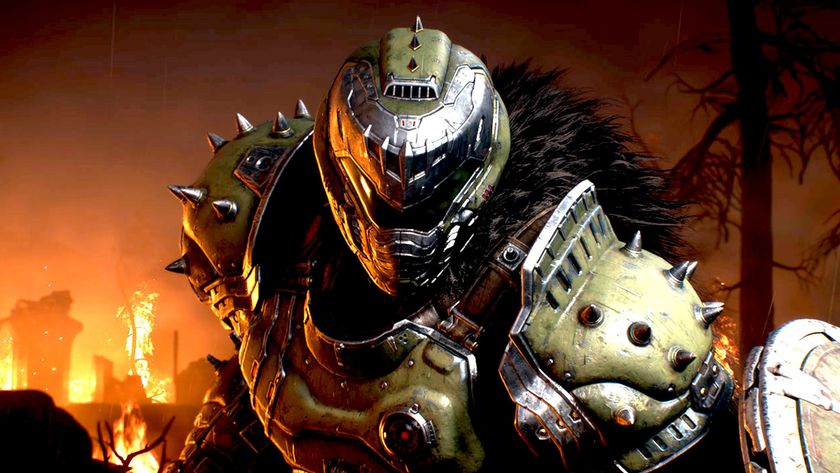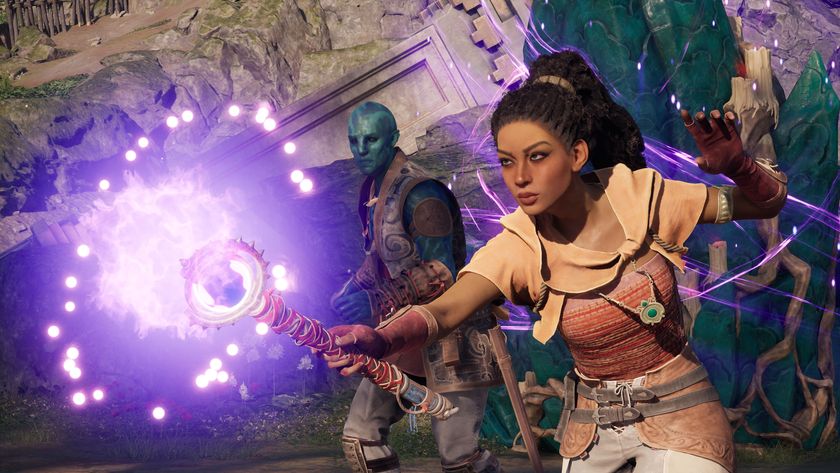How The Lost Boys made vampires sexy
The summer of 1987 marked the start of an enduring romance between teenagers and vampires. Before The Lost Boys the main vamp, Dracula, was a middle-aged man in a suit, cape and bow tie prone to misting up windows and nibbling the necks of starched Victorian ladies. Director Joel Schumacher took the myth and made it new, putting a gang of hot young actors on motorcycles and dressing them in black leather jackets and bleached denim. Here were some monsters to make out with.
At the test screening the audience reacted with a mania otherwise reserved for rock stars, tearing up the cinema seats as the undead tore up the beach on their bikes. Vampires, it seemed, were sexy. Over two decades later and a beach screening of The Lost Boys in the coastal town of Santa Cruz just south of San Francisco still draws in nearly 10,000 fans. It’s here where Schumacher brought his young cast and created the fictional vampire haunt Santa Carla. This hippy surfing town was tagged ‘Murder Capital of the World’ in the ’70s after the exploits of three local serial killers caught media attention. Schumacher played on this, spray-painting the phrase on the back of the welcome sign seen as Sam (Corey Haim), Michael (Jason Patric) and their mother Lucy (Dianne Wiest) arrive from Arizona to move in with their eccentric Grandpa.
Wary of being associated with the creatures of the night, the town requested an alias be used. It hardly matters: Santa Cruz is easily identified as the stomping ground of the Lost Boys, virtually unchanged from its onscreen incarnation with the Sky glider still ferrying corn-dog clutchers over the beach and the lights of the wooden rollercoaster beginning to glow against the sunset. Standing on the boardwalk, listening to the screams of thrill-seekers thrown into a darkening sky by the Double Shot.
The cast divided into packs – Haim, Feldman and his onscreen brother Jamison Newlander were all around 16 while Patric and the Lost Boys gang were in their twenties. “We were separate tribes. The three of us had mostly G-rated fun. The older kids were up all night partying. They put tin foil on the hotel windows so they could sleep all day,” recalls Feldman. Newlander remembers it as a coming-of-age experience. “It was like summer camp,” he says. “We tried to be like the bad boys, but the worst we would do was sneak into the hotel swimming pool past midnight. To an extent, art mirrored life. We were working out growing up.”
Although celebrity magazines already talked of ‘The Two Coreys’, Feldman met Haim for the first time during casting for the movie. “I was with Joel [Schumacher] and the wardrobe designer choosing outfits. Joel took a call and said, ‘I’ve got a great cast – Kiefer Sutherland and Corey Haim…’ I knew Kiefer, but I didn’t know Corey and I wondered who this kid was with the same name as me and how that would work, having two Coreys on set. Later that day he called me up and our friendship started…”
Accordingly to Joel Schumacher, The Lost Boys began life as ‘The Goonies go vampire’. “The script had a great title and I loved the idea of vampires living in Santa Cruz, but I didn’t want to make a kids’ movie,” Schumacher recalls. “On my first reading, I knew I didn’t want to have the Lost Boys living in a cave. Hollywood caves are always plastic and unrealistic. I wanted their home to have a Death In Venice-style, Victorian atmosphere. Once the studio accepted that, I then asked to make more changes.” One of those was upping the ages of the characters, from pre-teens to young men. Once studio execs had agreed, Schumacher cashed in his St Elmo’s Fire credit to persuade them to let him use unknowns.
The biggest name onboard for the goonie-vampire gang was 21-year-old Kiefer Sutherland, with only one US-based movie behind him. Alex Winter, later to go big in Bill And Ted’s Excellent Adventure, was just out of New York film school. Billy Wirth and Brooke McCarter were making their way as models. Experienced cast member Edward Herrmann, playing the town’s video store owner and head vampire, Max, recognised the heartthrobs-in-the-making. “Dianne [Wiest] and I would watch the boys running around the hotel and I would say ‘Oh, to just be that effortlessly good-looking for one time in my life would be so much fun,’” he recalls. “Joel was very hip. He portrayed the Lost Boys as a combination of James Dean and Jack the Ripper. There’s both a romantic and a rebellious side to them.”
Sign up to the 12DOVE Newsletter
Weekly digests, tales from the communities you love, and more
While Schumacher took something of a punt on his hot young cast, he played safe with his adult roles, nabbing his first choices Hermann then Wiest, directly after her Academy Award-winning turn in Hannah And Her Sisters. As Herrmann puts it, “With the classic movies of the ’40s and ’50s there was the attitude that the faces sold the film, the personalities. Joel understood that. And if you have good dialogue that cracks along on top, then you have an ace.”
Schumacher knew the power of sexing up the horror. “Vampires are hot,” he says. “They’re the only erotic monster. Frankenstein’s not hot.” While Sutherland took on prime pin-up status as a result of his brooding screen presence, the director provided the safety of a good boy in Jason Patric, while Jami Gertz – playing half-vampire Star – provided female eye-candy. Schumacher had been looking for a “blonde waif” for the part but went for Gertz at the recommendation of Patric, who’d appeared in a play with her. Schumacher knew he had the right girl, admitting the Lost Boys actors had crushes on the engaged actress, who kept them “at arm’s length.”
An ’80s vampire flick could have easily been forgettable fun with cheesy special effects but, as Hermann puts it, “Movies tend to date themselves very quickly unless they’re about something that matters, something that’s real. This movie has a good core. It’s about real people struggling to stay ‘human’ in a real way and be decent and good.” Schumacher admits the film can be read as a tale of the teen experience, which is vital to its ongoing appeal. “Michael is the disenfranchised youth, the troubled son of a recently divorced single mother. His becoming a vampire can be seen as a metaphor for drug taking, for heroin.’”
Not that you’ll find any Twilight-style moping here, though. The coming-of-age themes are dealt with lightly, with wit. The script is packed with quotable, funny lines that remain fresh. Today the genres of horror and comedy are mixed frequently, but back in 1987 Schumacher found the studio execs puzzled by the tone of The Lost Boys. “They asked me if this was horror or comedy,” recalls the director. “I said, ‘Yes.’” As well as giving a new lease of life to vampire mythology, the movie set a horror-com standard long before Buffy The Vampire Slayer or Shaun Of The Dead. Newlander describes how Schumacher’s humour was so popular with the three younger cast members that they would fight over who got the one-liners… “Joel awarded me the joke, ‘It’s the attack of Eddie Munster!’ in the vampire-killing scene for being such a good kid on set.”
When asked about the movie’s enduring ‘cool’ status, the director and cast see the soundtrack as playing an important part. “The great thing about making a movie is you can put in all the songs that you love,” says Schumacher. “I’m a big Jim Morrison fan, so I asked the keyboard artist from The Doors for permission to re-record ‘People Are Strange’ with Echo And The Bunnymen. The theme [‘Cry Little Sister’] came to me as a sample demo. Gerard McMahon sent a note saying he’d read the script and written this song for the film. It’s haunting, religious, sexy – perfect.”
The Lost Boys was no instant classic. It took time to become cult. “As a kid you don’t value the weight of what you do,” Feldman admits. “Every movie I was in then was a hit, it was the norm for me. It wasn’t until years later that I realised this film was cool. It wasn’t just a horror flick. Now everywhere I go people ask me about The Lost Boys…”
Schumacher wanted to produce a teen movie that looked like a “first-class, A-grade film with all the values of something starring a cast of older actors.” Despite a relatively small budget, he hooked the cinematographer of Taxi Driver and Raging Bull, Michael Chapman, to capture the Santa Cruz coastline. The locations, filled with detail and masterfully framed, give an indication of a complex, multi-layered world in a mere few scenes – from Grandpa’s taxidermy work shop to the vampires’ decadently gothic home. The film’s aesthetic proved influential for years to come – its mix of Victoriana, punk and ’50s style continuing to emerge cyclically as a fashion trend. “At the time I was fascinated by English gypsy culture,” Schumacher says. “Their style had a sense of anarchy and rebellion. Gypsies are outsiders, and this movie is, in a way, about the fear we have of the Other – those who live outside of the mainstream.”
Kiefer Sutherland’s swaggering style and bleached ’do may have contributed to enduring audience fascination, but he recently admitted another take – the chemistry between David and Michael. “That whole scene where I catch him in the fog coming off the bridge… I mean, it’s a very sensual moment!” says the actor, who still holds special affection for a film he calls “an ’80s capsule”. “The Lost Boys was a massive part of my life, still is.”
Click here for more excellent Total Film articles. Or maybe you want to take advantage of some great offers on magazine subscriptions? You can find them here.
12DOVE was first founded in 1999, and since then has been dedicated to delivering video game-related news, reviews, previews, features, and more. Since late 2014, the website has been the online home of Total Film, SFX, Edge, and PLAY magazines, with comics site Newsarama joining the fold in 2020. Our aim as the global GamesRadar Staff team is to take you closer to the games, movies, TV shows, and comics that you love. We want to upgrade your downtime, and help you make the most of your time, money, and skills. We always aim to entertain, inform, and inspire through our mix of content - which includes news, reviews, features, tips, buying guides, and videos.
Most Popular







